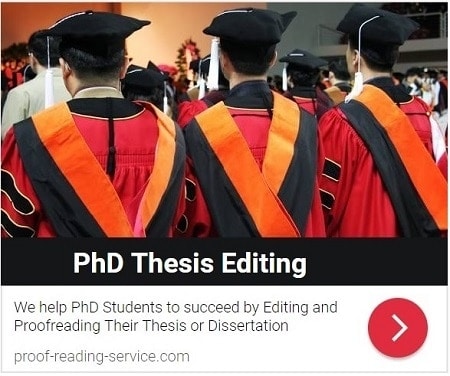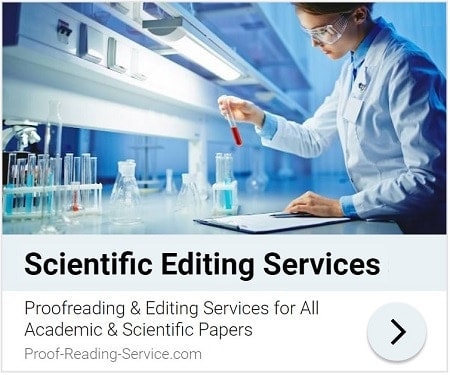
Table of Contents (Guide To Publication)
Part I: What To Publish and Where To Publish It – Chapter 2
2. Targeting an Journal: The Right Paper in the Right Place
With the basic design of your article in mind, your tables and figures planned (if not yet actually constructed) and perhaps your paper drafted as well, you will need to choose a journal that is appropriate for your work before making final decisions about structure and presentation. Each journal will provide different guidelines or instructions for authors to follow, some of them very detailed and specific, others much less so, allowing authors a great deal more flexibility in terms of how they prepare their writing. Occasionally, such guidelines will need to be considered when choosing a journal: if you simply cannot describe the nature of your study, report your results and construct your argument effectively in less than 8,000 words and seven tables, a journal that calls for papers no longer than 4,000 words with no more than two tables simply will not do for that paper. However, decisions about where to submit your work are generally determined not by such practical details, but by considering the overall nature of both your work and the journal in which you’d like to see that work published.
2.1 Choosing the Journal that Fits and Benefits Your Work
2.1.1 Range and Specialisation: Is It the Right Fit?
It may seem painfully obvious to say that when you plan to submit an academic or scientific article for publication you need to select a journal with great care, but the fact is that the decision-making process is too often not given enough time and attention. Certainly most authors do try to submit medical papers to medical journals, literary papers to literary journals and geological papers to geological journals, but there should be far more to the decision than that. One literary journal, for example, may consider a wide range of world literature, encompassing fiction and nonfiction, prose and poetry in a variety of languages, while another will focus very closely on one genre in one language from a single period (Middle English poetry, for instance), and still another might only publish work on a particular author (William Shakespeare comes to mind as an author with more than one dedicated journal). Some journals pride themselves on being extremely traditional, while others consider themselves unorthodox and avant-garde in terms of what they publish, and some limit their articles to particular themes or approaches, so while one might welcome a close textual analysis of an English meditation on suicide, another is looking for a theoretical study of French love poetry from a feminist or deconstructionist perspective. Sending a paper on one of these topics to a journal editor who would be pleased to publish the other will never lead to publishing success.
The key, then, to choosing the right journal is to learn as much as possible about the range and specialisation of the journals under consideration. Check the ‘About us’ pages on their web sites to find out what their goals and mission statements are; scan archived issues to detect prevalent themes and topic areas; read papers they’ve already published, especially any articles that sound as though they deal with the same topic as yours or use similar methodology. Use the sources that serve as the inspiration for your own work as a guide: if a number of them are published in the same journal, that’s an excellent journal to explore. If your academic supervisor is helping you with critical advice on your paper, use a discussion of his or her feedback as an opportunity to ask which journal he or she thinks might be a good fit for your work. If you have colleagues publishing work much like your own, find out where they’re publishing and if they might have any helpful advice. If you’ve published your work in a journal before, your chances of being published by the same journal are good – certainly the editor will attend carefully to your new paper – but that alone is not reason enough to send your work to that journal. Only if your new article suits the journal’s publishing agenda as well as the one already published in it did (or if you’ve been lucky enough to receive an open invitation to submit future work) should you submit to the same journal. As much care should be taken over a good publishing relationship as over a good academic or scientific paper, and a good publishing relationship is fostered by sending top quality work that fits.
It can sometimes be helpful to contact a journal before deciding to submit your paper. Not all journals will welcome such queries, however, so if the guidelines suggest that this is not wanted – that is, that only full submissions are requested – don’t pursue this approach. If, on the other hand, the journal invites queries in advance of submission or it seems that a query letter might be an effective means of first contact with a journal that simply doesn’t have the space to include all the publishable papers it receives, it can be useful to send a message outlining the point of your study and including a summary of your paper (an early draft of the abstract would serve this purpose well, but be sure to polish and perfect it before sending it along: see Section 6.2.2). If you learn from your query that the topic or methodology of your paper would make it a low priority for the journal, it doesn’t mean that you should abandon your efforts to publish your paper in that journal if that is your preference, but you will have a better understanding of the challenges you face and can then decide whether you should continue your efforts to publish in that journal or spend your time seeking an appropriate journal with which you stand a better chance of success.
This article is part of a book called Guide to Academic and Scientific Publication: How To Get Your Writing Published in Scholarly Journals. It provides practical advice on planning, preparing and submitting articles for publication in scholarly journals.
Whether you are looking for information on designing an academic or scientific article, constructing a scholarly argument, targeting the right journal, following journal guidelines with precision, providing accurate and complete references, writing correct and elegant scholarly English, communicating with journal editors or revising your paper in light of that communication, you will find guidance, tips and examples in this manual.
This book is focusing on sound scholarly principles and practices as well as the expectations and requirements of academic and scientific journals, this guide is suitable for use in a wide variety of disciplines, including Economics, Engineering, the Humanities, Law, Management, Mathematics, Medicine and the Social, Physical and Biological Sciences .






